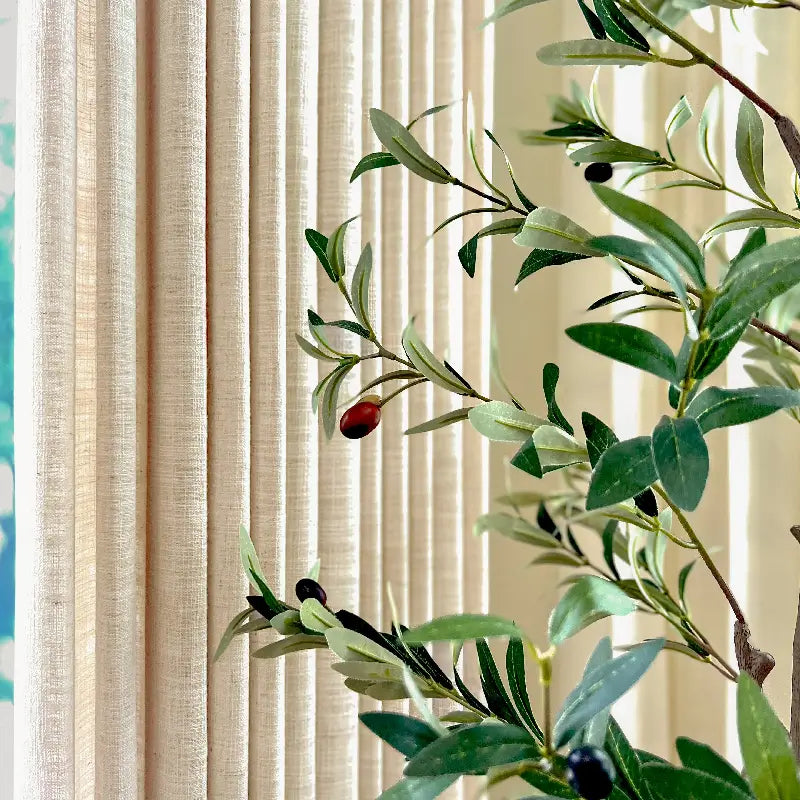
Choosing the Perfect Curtain Color for Your Living Room
Your living room is the heart of your home—a place for relaxation, entertaining, and making memories. The color of your curtains plays a huge role in setting the mood, complementing your décor, and even impacting how spacious or cozy the room feels. This post will explore strategies and practical tips to help you pick the ideal curtain hue for your living room.
1. Start with Your Existing Palette
Before you shop, consider the dominant colors in your living room—the walls, furniture, rugs, artwork, and accent pieces.
- Monochromatic Schemes: If your walls and furnishings are all neutrals (whites, greys, beiges), you have free rein to introduce a splash of color with your curtains—teal, mustard, or punchy coral.
- Colorful Interiors: If you already have vibrant sofas or accent pillows, choose curtains in a complementary or anchoring tone. For example, deep navy drapes can ground a room with bright yellows and greens.
2. Match the Mood and Style
Curtains aren’t just functional—they convey style. Think about the atmosphere you want:
- Serene & Airy: Soft pastels like blush pink, powder blue or mint green create a calm, uplifting vibe.
- Warm & Cozy: Rich jewel tones—emerald, sapphire, or burgundy—add depth and intimacy.
- Modern & Minimal: Crisp whites or charcoal greys keep things sleek and uncluttered.
- Eclectic & Bold: Patterns such as abstract geometrics or tropical botanicals in mixed colors add personality.
3. Use Contrast and Complement
A smart pop of contrast can make curtains the star of the show:
- Contrast: In a light‑filled white or cream room, choose dark curtains (e.g., espresso brown or graphite) to create a striking visual frame.
- Complement: For walls in muted earth tones—olive, taupe, or terracotta—choose curtains within the same color family but a shade lighter or darker to achieve harmony.
4. Consider Light and Function
The amount of natural light and your functional needs will influence both color and fabric choice:
- Bright, Sunny Rooms: Darker hues help reduce glare and protect upholstery from fading.
- Dim or North‑Facing Rooms: Lighter shades (linen, ivory) reflect your little light, making the space more open.
- Blackout vs. Sheer: If you need privacy or TV‑friendly darkness, pair a bold-colored blackout panel with a sheer white or ivory inner curtain.
5. Think About Scale and Pattern
Color isn’t everything—texture and pattern matter, too:
- Solid Colors: For minimalist or modern spaces, solid drapes let other décor elements shine.
- Subtle Patterns: Small-scale stripes, delicate ikats, or tone‑on‑tone damasks add visual interest without overwhelming the room.
- Large‑Scale Prints: Best in a more eclectic or maximalist setting—keep the rest of the room simple to avoid visual clutter.
6. Stay Timeless with Timeless Neutrals
If you plan on redecorating frequently, neutral curtains are a safe, long‑lasting choice:
- Warm Neutrals: Cream, taupe, or greige (grey‑beige) pair easily with cool, warm accent colors.
- Cool Neutrals: Light greys or slate can modernize a traditional living room.
7. Test with Swatches
Before committing, borrow or buy small fabric samples. Tape them up and observe how they look at different times of day—morning sunlight, afternoon glare, and evening lamplight.
Conclusion
Choosing curtain color is a blend of art and practicality. By considering your room’s existing colors, the mood you want to create, and how light interacts with your space, you can select curtains that look beautiful and enhance the functionality and feel of your living room. Remember: don’t rush the process—take time to test swatches and imagine how each hue supports your overall design vision.
Now go ahead—drape your windows in the perfect color and watch your living room transform!










